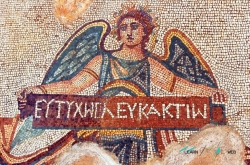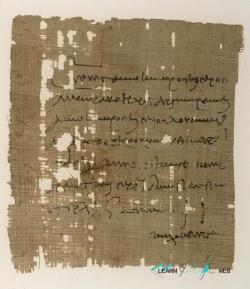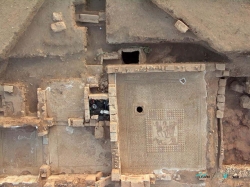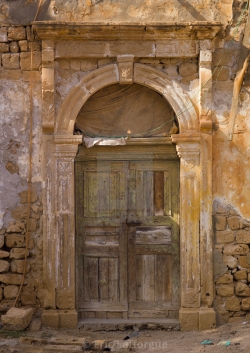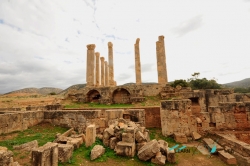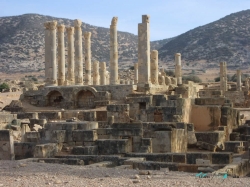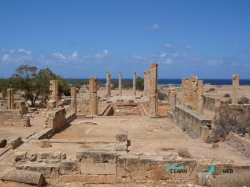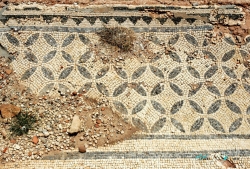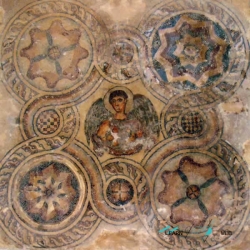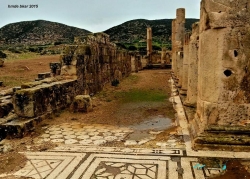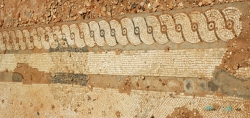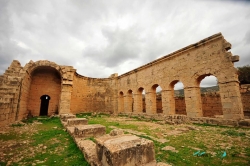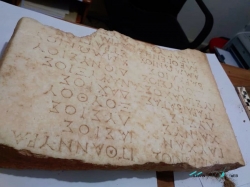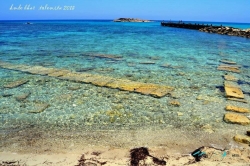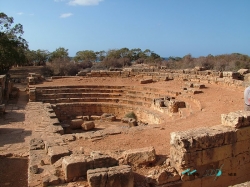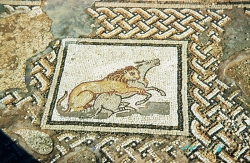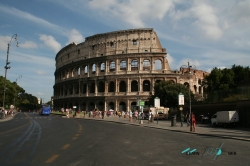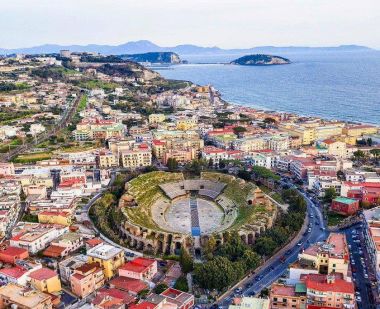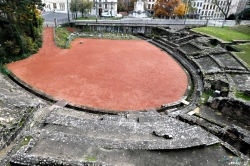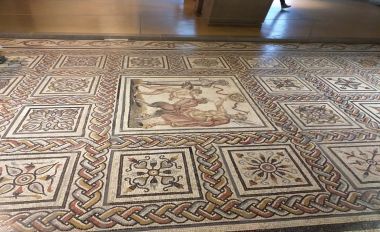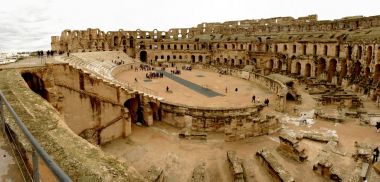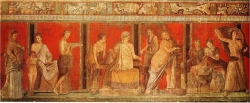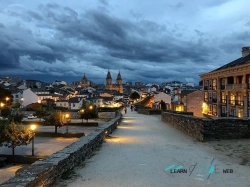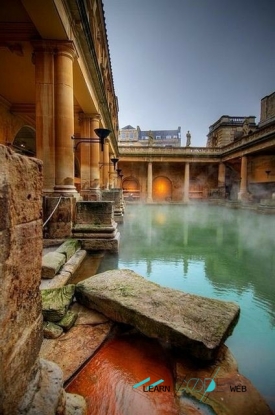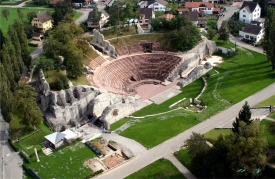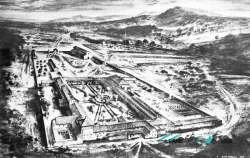ABOUT Mina Tolmeita
Mina Tolmeita formerly Ptolemais (Greek: Πτολεμαΐς) was one of the five cities that formed the Pentapolis of Cyrenaica, the others being Cyrene, Euesperides (later known as Berenice, now Benghazi), Tauchira/Teuchira (later Arsinoe, and now Tocra), and Apollonia (now Susa).
The city was founded by and named after one of the rulers of the Ptolemaic Kingdom, probably Ptolemy III Euergetes (246–221 BC). What had been a small Greek settlement of unknown name that originated in the late 7th century BC and that acted as a port for the city of Barca, 24 kilometres (15 mi) inland, he transformed into a city that enclosed 280 hectares within its walls. Ptolemais probably served as the residence of the Ptolemaic governor of the region but, in spite of its large area, its population did not rival that of Cyrene, which under Roman rule became the capital of the region that, from then on, and still today, is called Cyrenaica. However, the term "Pentapolis" also continued to be used.
Ptolemais became a Roman possession in 96 BC. It was soon included in the Roman province of Crete and Cyrenaica. With Diocletian's alteration of the administrative structure, Ptolemais became the capital of the province of Libya Superior or Libya Pentapolis. It later decayed and was replaced as capital of the province by Apollonia.
The 365 Crete earthquake struck the region and destroyed all the five major cities of the Pentapolis. Ptolemais survived the tragedy in relatively good condition. It served as capital of Cyrenaica until 428. The city was destroyed by the Libyans in 411. During the reign of Justinian I the city was rebuilt, but it never regained its powers and was again destroyed during the Muslim conquest of the Maghreb in the 7th century.
Buried in the sands, the town's ruins have been remarkably well preserved. Excavation of the site began in the 1930s, revealing a planned city of rectangular shape, some 1650 by 1400 metres (about one square mile) and composed of blocks of about 180 by 36 metres. It held a hippodrome, an amphitheatre, and three theatres, the smallest of which, used as an odeon, was adapted for water spectacles in the 4th or 5th century.
A Roman aqueduct, probably of the time of Hadrian, brought water from 20 km away, which was stored in two large open reservoirs in the east of the city, while further west a porticoed space, now called the Square of the Cisterns, stood above a set of seventeen vaulted cisterns, capable of holding 7,000 kilolitres. These were rediscovered during the Italian occupation, when they were found to be used as a hiding place for rebels, two or three hundred of whom could easily hide in them.
West of the city stands a conspicuous and tower-like Hellenistic mausoleum, known as Qasr Faraoun. There are many chamber tombs in the quarries east and west of the city, which have yielded a few tombstones and numerous inscriptions. Important sculptures and inscriptions have also been found within the city, including imperial edicts such as that by which Diocletian attempted to fix prices.
In 2001 an archaeological mission from Warsaw University started excavations on the site.
In May 2011, a number of objects excavated from Ptolemais in 1937 and held in the vault of the National Commercial Bank in Benghazi were stolen. Looters tunnelled into the vault and broke into two safes that held the artifacts which were part of the so-called Benghazi Treasure. The objects have not been traced.
The city was founded by and named after one of the rulers of the Ptolemaic Kingdom, probably Ptolemy III Euergetes (246–221 BC). What had been a small Greek settlement of unknown name that originated in the late 7th century BC and that acted as a port for the city of Barca, 24 kilometres (15 mi) inland, he transformed into a city that enclosed 280 hectares within its walls. Ptolemais probably served as the residence of the Ptolemaic governor of the region but, in spite of its large area, its population did not rival that of Cyrene, which under Roman rule became the capital of the region that, from then on, and still today, is called Cyrenaica. However, the term "Pentapolis" also continued to be used.
Ptolemais became a Roman possession in 96 BC. It was soon included in the Roman province of Crete and Cyrenaica. With Diocletian's alteration of the administrative structure, Ptolemais became the capital of the province of Libya Superior or Libya Pentapolis. It later decayed and was replaced as capital of the province by Apollonia.
The 365 Crete earthquake struck the region and destroyed all the five major cities of the Pentapolis. Ptolemais survived the tragedy in relatively good condition. It served as capital of Cyrenaica until 428. The city was destroyed by the Libyans in 411. During the reign of Justinian I the city was rebuilt, but it never regained its powers and was again destroyed during the Muslim conquest of the Maghreb in the 7th century.
Buried in the sands, the town's ruins have been remarkably well preserved. Excavation of the site began in the 1930s, revealing a planned city of rectangular shape, some 1650 by 1400 metres (about one square mile) and composed of blocks of about 180 by 36 metres. It held a hippodrome, an amphitheatre, and three theatres, the smallest of which, used as an odeon, was adapted for water spectacles in the 4th or 5th century.
A Roman aqueduct, probably of the time of Hadrian, brought water from 20 km away, which was stored in two large open reservoirs in the east of the city, while further west a porticoed space, now called the Square of the Cisterns, stood above a set of seventeen vaulted cisterns, capable of holding 7,000 kilolitres. These were rediscovered during the Italian occupation, when they were found to be used as a hiding place for rebels, two or three hundred of whom could easily hide in them.
West of the city stands a conspicuous and tower-like Hellenistic mausoleum, known as Qasr Faraoun. There are many chamber tombs in the quarries east and west of the city, which have yielded a few tombstones and numerous inscriptions. Important sculptures and inscriptions have also been found within the city, including imperial edicts such as that by which Diocletian attempted to fix prices.
In 2001 an archaeological mission from Warsaw University started excavations on the site.
In May 2011, a number of objects excavated from Ptolemais in 1937 and held in the vault of the National Commercial Bank in Benghazi were stolen. Looters tunnelled into the vault and broke into two safes that held the artifacts which were part of the so-called Benghazi Treasure. The objects have not been traced.



